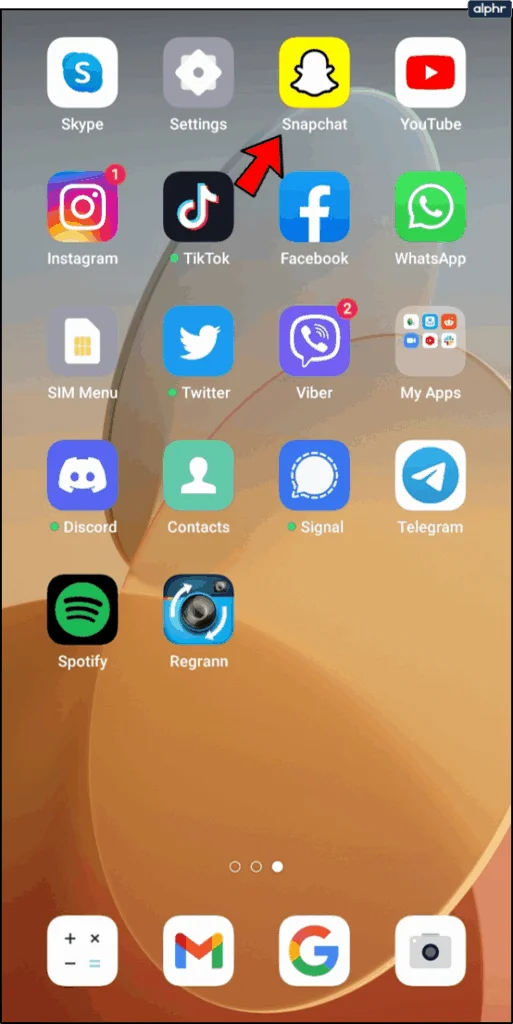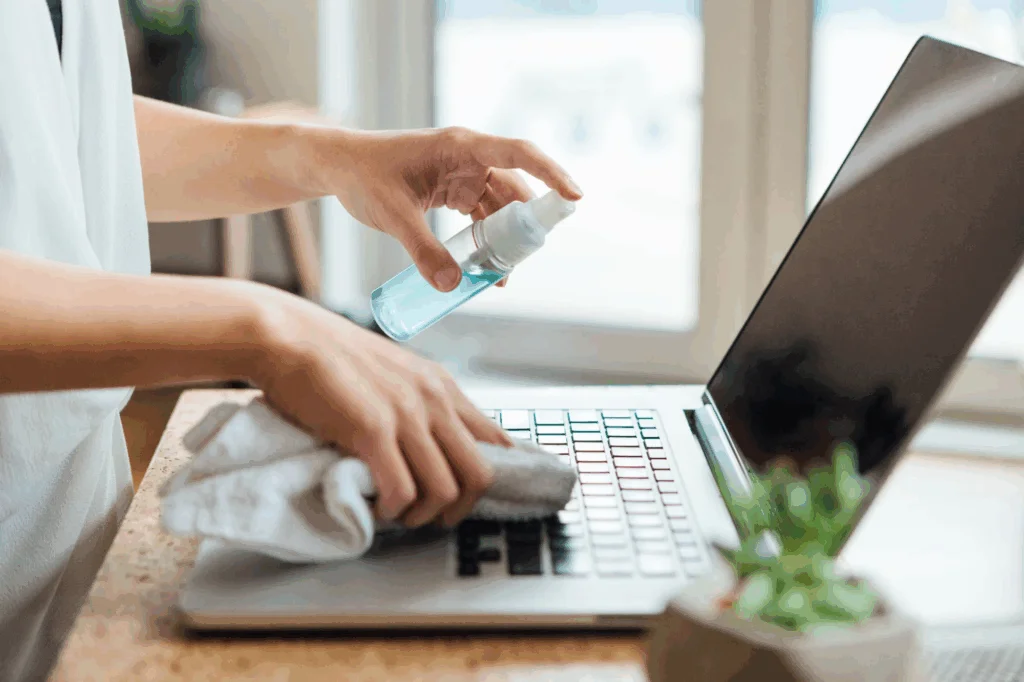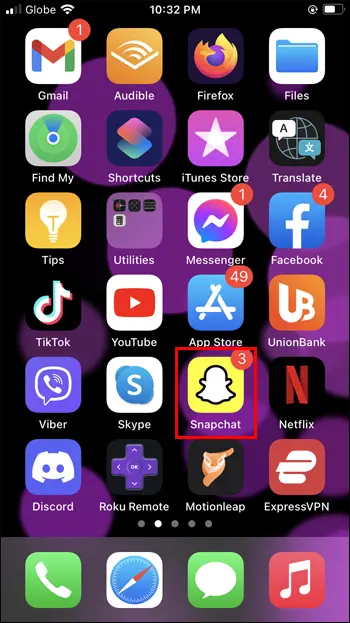
The Complete Guide to Cleaning Your MacBook Screen: Expert Tips for Streak-Free Results

MacBook users face a common challenge: maintaining a pristine display in the face of daily use. Whether you’re dealing with fingerprints from touchscreen interactions, dust accumulation, or stubborn smudges that affect your viewing experience, proper screen maintenance is crucial for both aesthetic appeal and device longevity.
This comprehensive guide provides expert-approved methods to clean your MacBook screen safely and effectively, ensuring optimal display performance while protecting your valuable investment.
Why Proper MacBook Screen Cleaning Matters
Your MacBook’s display is more than just a viewing surface—it’s a sophisticated piece of technology that requires careful maintenance. According to Apple’s internal research, improper cleaning techniques cause over 30% of display-related warranty claims. Here’s why proper cleaning is essential:
Display Performance Impact
- Reduced clarity: Accumulated dirt and oils can create a hazy film that diminishes screen brightness by up to 20%
- Color accuracy: Smudges and fingerprints can interfere with color reproduction, affecting professional work
- Touch sensitivity: For MacBooks with touch-enabled displays, debris can impact responsiveness
- Heat dissipation: Clean surfaces allow better heat transfer, preventing overheating issues
Long-term Device Health
Regular, proper cleaning extends your MacBook’s lifespan by preventing:
- Permanent staining from acidic substances
- Micro-scratches from improper cleaning materials
- Moisture damage from incorrect cleaning techniques
- Coating degradation from harsh chemicals
Essential Safety Guidelines: Apple-Approved Do’s and Don’ts
Before diving into cleaning procedures, understanding Apple’s official guidelines is crucial for preventing damage to your device.

Critical Do’s for Safe Cleaning
Power and Connection Safety
- Always completely shut down your MacBook before cleaning—sleep mode isn’t sufficient
- Unplug all external power sources, USB devices, and cables
- Remove any connected accessories like dongles or adapters
- Wait 10-15 minutes after shutdown to allow internal components to cool
Approved Cleaning Materials
- Use only soft, lint-free microfiber cloths (preferably 300+ GSM density)
- Apple-approved disinfectants include:
- 70% isopropyl alcohol wipes
- 75% ethyl alcohol wipes
- Clorox Disinfecting Wipes (original formula only)
- Distilled water for basic cleaning (avoid tap water due to mineral content)
Proper Technique
- Apply gentle, consistent pressure—never press hard enough to create visible screen distortion
- Use circular motions starting from the center and working outward
- Clean in overlapping sections to ensure complete coverage
- Allow complete air drying (minimum 5 minutes) before powering on
Absolute Don’ts: Avoid These Common Mistakes
Prohibited Materials
- Paper towels, tissues, or toilet paper (these can scratch anti-glare coatings)
- Rough cloths, terry cloth, or clothing fabrics
- Abrasive cleaning pads or sponges
- Chemical cleaners including:
- Window cleaners (ammonia-based)
- Acetone or nail polish remover
- Hydrogen peroxide solutions
- Bleach or chlorine-based cleaners
- Aerosol sprays of any kind
Dangerous Techniques
- Never spray liquid directly onto the screen
- Don’t submerge or heavily saturate cleaning cloths
- Avoid applying pressure while the screen displays content
- Don’t clean in direct sunlight or extreme temperatures
- Never use compressed air directly on the display surface
Step-by-Step MacBook Screen Cleaning Process
This method works for all MacBook models, including MacBook Air, MacBook Pro (13″, 14″, 16″), and external Apple displays.
Phase 1: Preparation and Initial Cleaning
- Complete Shutdown Process
- Save all work and close applications
- Shut down through Apple menu → Shut Down
- Wait for the screen to go completely black
- Unplug power adapter and all connected devices
- Position for Cleaning
- Open the MacBook to normal viewing angle (approximately 120 degrees)
- Place on a stable, flat surface with good lighting
- Ensure adequate workspace around the device
- Initial Dust Removal
- Use a completely dry microfiber cloth
- Gently wipe the screen using horizontal strokes
- Work from top to bottom to prevent redistribution of particles
- Pay special attention to corners and edges where dust accumulates
Phase 2: Deep Cleaning Process
- Prepare Cleaning Solution
- For basic cleaning: Use distilled water only
- For disinfection: Prepare 70% isopropyl alcohol solution
- For stubborn stains: Use pre-approved disinfectant wipes
- Cloth Preparation
- Lightly dampen one section of the microfiber cloth
- Wring out excess moisture—cloth should be barely damp
- Test moisture level on a corner first
- Fold cloth to create multiple clean surfaces
- Screen Cleaning Technique
- Support the screen with your non-dominant hand behind the display
- Use gentle, circular motions starting from the center
- Work outward in overlapping circles
- Apply consistent, light pressure throughout
- Avoid concentrating on individual spots for extended periods
Phase 3: Final Steps and Drying
- Moisture Removal
- Use a clean, dry section of the microfiber cloth
- Perform gentle buffing motions to remove any remaining moisture
- Check for streaks or residual dampness
- Ensure complete dryness around screen edges and bezels
- Final Inspection and Power-On
- Allow 5-10 minutes of air drying time
- Inspect screen at an angle under good lighting for missed spots
- Only power on once completely dry
- Test display function before resuming normal use
Specialized Cleaning for Premium Apple Displays
Apple Studio Display, Pro Display XDR, and iMac Cleaning
Apple’s premium displays with nano-textured glass require specialized care due to their unique anti-glare coating.
Required Materials
- Apple Polishing Cloth (part number MM6F3AM/A)
- Distilled water or 70% isopropyl alcohol solution
- Replacement polishing cloths available for $19 from Apple
Cleaning Process
- Power down the display completely and unplug power adapter
- Use the Apple Polishing Cloth dry for initial dust removal
- For deeper cleaning, lightly dampen cloth with approved solution
- Clean using gentle, straight-line motions (avoid circular patterns on nano-textured glass)
- Allow complete air drying before reconnecting power
Maintaining Your Apple Polishing Cloth
To ensure optimal cleaning performance:
- Hand wash with mild dish soap and lukewarm water
- Rinse thoroughly under running water until soap residue is gone
- Gently squeeze (don’t wring) to remove excess water
- Air dry flat for 24-48 hours before use
- Store in a clean, dry location away from dust and debris
MacBook Keyboard Cleaning: Complementary Maintenance
Since you’re already in cleaning mode, maintaining your keyboard ensures complete device hygiene.
Surface Keyboard Cleaning
- Basic Maintenance
- Use dry microfiber cloth for daily cleaning
- Wipe keys individually with gentle pressure
- Clean trackpad using same technique as screen
- Pay attention to commonly used keys (space bar, enter, shift)
- Deep Cleaning Process
- Lightly dampen cloth with distilled water or approved disinfectant
- Clean each key top without allowing moisture to seep between keys
- Use cotton swabs for detailed work around key edges
- Ensure complete drying before device use
Removing Debris from Under Keys
When to Use This Method
Only attempt this for significant debris issues, as it carries risk of damage.
Compressed Air Technique
- Position MacBook at 75-degree angle (nearly vertical)
- Hold compressed air can upright with straw attachment
- Maintain ½-inch distance from keyboard surface
- Spray in short bursts using left-to-right motion
- Rotate device and repeat from multiple angles
- Never invert compressed air can during use
Troubleshooting Common Cleaning Issues
Persistent Streaks and Spots
Cause: Usually mineral deposits from tap water or low-quality microfiber cloths
Solution:
- Switch to distilled water exclusively
- Invest in higher-quality microfiber cloths (500+ GSM)
- Use 70% isopropyl alcohol for stubborn deposits
- Consider professional display cleaning services for severe cases
Screen Appears Cloudy After Cleaning
Cause: Residual moisture trapped under screen coating or use of inappropriate cleaning products
Solution:
- Allow extended drying time (2-4 hours in low humidity environment)
- Use completely dry microfiber cloth for final buffing
- If cloudiness persists, contact Apple Support immediately
Cleaning Product Compatibility
Safe for MacBook Screens:
| Product Type | Brand Examples | Notes |
|---|---|---|
| Microfiber Cloths | MagicFiber, AmazonBasics | 300+ GSM recommended |
| Isopropyl Alcohol | Swan, CVS Brand | 70% concentration only |
| Disinfectant Wipes | Clorox Original | Avoid scented variants |
| Distilled Water | Any brand | Never use tap water |
Never Use on MacBook Screens:
- Windex or ammonia-based cleaners
- Acetone or nail polish remover
- Hydrogen peroxide solutions
- Paper towels or napkins
- Household cleaners or all-purpose sprays
Maintenance Schedule and Best Practices
Daily Maintenance
- Quick dry wipe with microfiber cloth
- Close lid gently to prevent key impressions on screen
- Use keyboard cover if eating/drinking nearby
Weekly Deep Cleaning
- Complete cleaning process as outlined above
- Inspect for developing issues or permanent stains
- Clean surrounding workspace to prevent dust accumulation
Monthly Inspection
- Check for coating degradation or permanent damage
- Evaluate cleaning cloth condition and replace if necessary
- Review cleaning technique effectiveness
Professional Cleaning Services and Warranty Considerations
When to Seek Professional Help
Contact Apple Support or authorized service providers if you experience:
- Permanent staining that won’t respond to approved cleaning methods
- Screen coating damage or peeling
- Display discoloration or dead pixels after cleaning
- Liquid damage from improper cleaning techniques
Warranty Protection
Proper cleaning using Apple-approved methods won’t void your warranty. However, damage from:
- Prohibited cleaning products
- Excessive moisture exposure
- Abrasive materials or techniques
- Liquid spills during cleaning
These issues may not be covered under standard warranty terms.
Advanced Tips for Different MacBook Models
MacBook Air Specific Considerations
- Thinner profile requires extra care during support
- Screen hinges are more delicate—avoid applying pressure near pivot points
- Aluminum body shows fingerprints easily—clean chassis simultaneously
MacBook Pro Specific Considerations
- Touch Bar models require specialized cleaning (contact Apple for guidance)
- Larger screens need sectional cleaning approach
- Higher resolution displays show imperfections more readily
Retina Display Care
- Anti-reflective coating is more sensitive to chemicals
- Higher pixel density makes streaks more visible
- Requires more frequent cleaning due to enhanced image quality expectations
Environmental Factors Affecting Screen Cleanliness
Humidity Considerations
- High humidity (>70%): Extends drying time, increases risk of moisture damage
- Low humidity (<30%): Creates static electricity, attracts dust more readily
- Optimal range: 40-60% relative humidity for cleaning and drying
Temperature Guidelines
- Clean at room temperature (68-72°F) for best results
- Avoid cleaning in direct sunlight or near heat sources
- Cold screens may show condensation from cleaning solutions
Conclusion: Maintaining Your MacBook’s Visual Excellence
Regular, proper cleaning of your MacBook screen is essential for maintaining optimal display performance and protecting your investment. By following Apple’s official guidelines and using the techniques outlined in this comprehensive guide, you can ensure your MacBook screen remains pristine and functional for years to come.
Remember that prevention is often better than correction—establishing good habits like regular gentle cleaning, proper storage, and careful handling will minimize the need for intensive cleaning sessions and extend your device’s lifespan.
The key to successful MacBook maintenance lies in consistency, proper materials, and gentle technique. When in doubt, err on the side of caution and consult Apple Support or authorized service providers for guidance specific to your model and situation.
Frequently Asked Questions
Can I use cleaning products meant for eyeglasses or camera lenses on MacBook screens?
While some eyewear cleaning products may be compatible, not all lens cleaners have the same formulation. Many contain chemicals that can damage MacBook screen coatings. Always check ingredients against Apple’s approved list and test on a small, inconspicuous area first. When in doubt, stick to distilled water or Apple-approved 70% isopropyl alcohol solutions.
How do I remove greasy stains and persistent fingerprints from my screen?
For stubborn greasy marks and fingerprints, start with a slightly dampened microfiber cloth using distilled water. If water alone isn’t effective, use 70% isopropyl alcohol wipes or Clorox Disinfecting Wipes applied to the cloth (never directly to the screen). Work in gentle circular motions and allow complete drying between attempts. Persistent stains may require professional cleaning services.
Why are there still spots or smudges on my screen after following the cleaning instructions?
Persistent spots typically result from one of several factors: low-quality microfiber cloths that don’t absorb moisture effectively, mineral deposits from tap water, or cleaning in inappropriate lighting conditions that makes it difficult to see all residue. Try switching to a higher-quality microfiber cloth (500+ GSM), use only distilled water, and clean under bright, indirect lighting. If problems persist, the issue may be permanent staining requiring professional assessment.
How often should I clean my MacBook screen?
The cleaning frequency depends on your usage patterns and environment. For typical office use, a light daily wipe with a dry microfiber cloth and weekly deep cleaning is sufficient. Heavy users or those in dusty environments may need cleaning every 2-3 days. Signs that cleaning is needed include visible smudges, reduced screen brightness, or difficulty reading text clearly.
Is it safe to clean my MacBook screen with baby wipes or sanitizing wipes?
Most baby wipes and sanitizing wipes contain lotions, fragrances, or chemicals that can damage screen coatings. Only use Clorox Disinfecting Wipes (original formula), 70% isopropyl alcohol wipes, or 75% ethyl alcohol wipes as specifically approved by Apple. Always check the ingredient list and avoid products with added moisturizers, fragrances, or bleaching agents.
SEO Optimization Details
Description: Learn how to clean your MacBook screen safely





